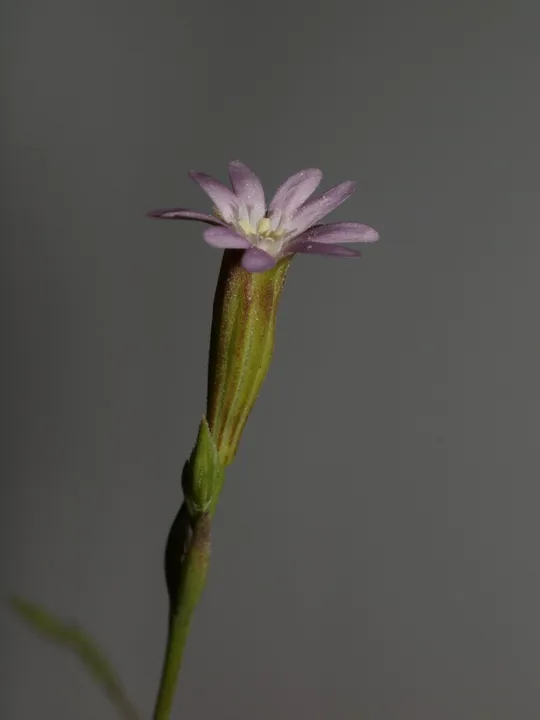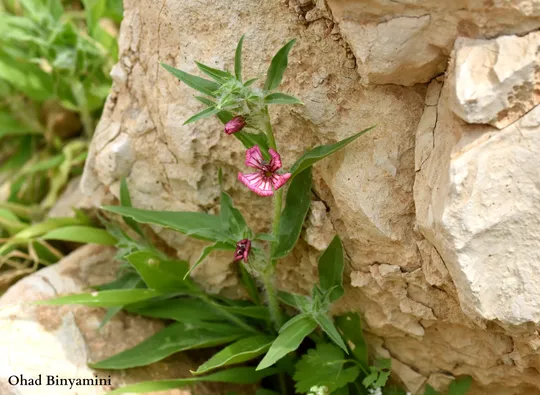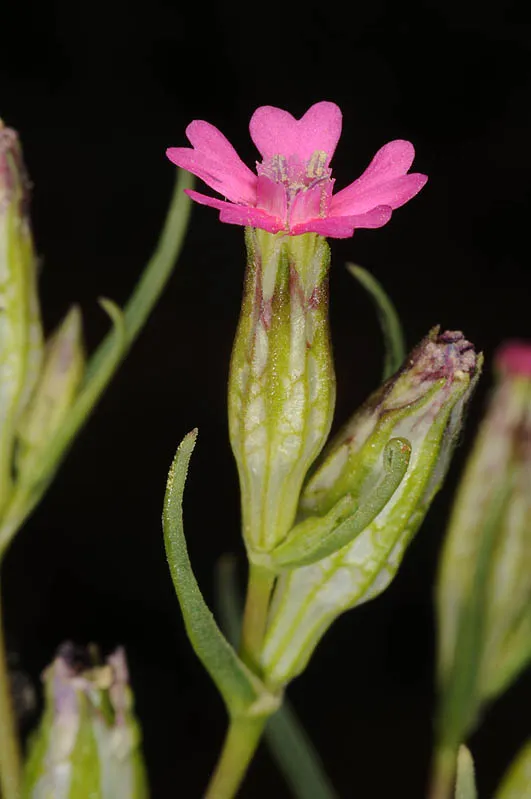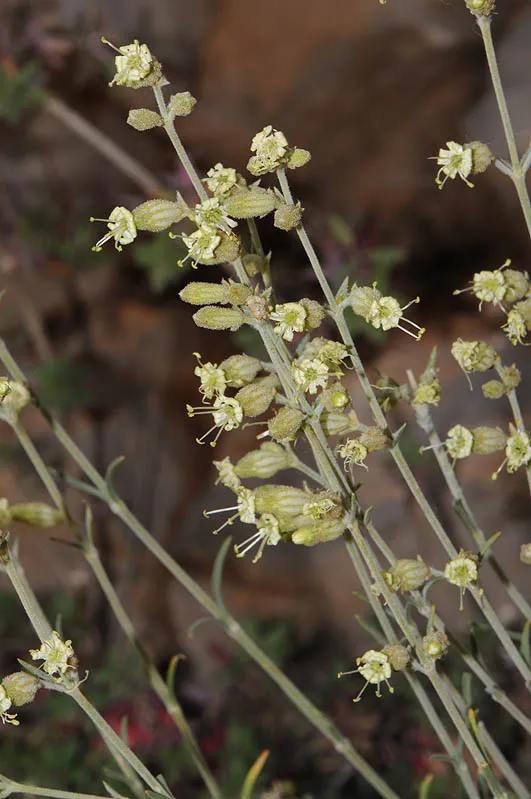Hairy Catchfly, Stonecrop Catchfly
Silene sedoides
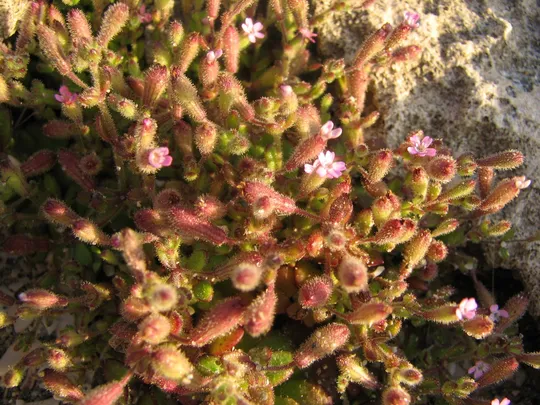

Silene sedoides
is found in the coastal spray zone in the Acre Valley, Carmel Coast, and Sharon
regions. Eighteen definite sites were found in Israel, although it is estimated
that there are 20 sites. In the Acre Valley (Galilee coast), it becomes increasingly
common northwards up to Rosh HaNikra. It is particularly common in the Akhziv-Rosh
HaNikra section, and has also been recorded from Hatsrot Yesef and Mazra'a
Beach in this region. South of Haifa, on the other hand, it is rare: on the
Carmel Coast, it has been observed so far only in Atlit and the Dor-HaBonim
Beach; in the Sharon it is found in Tel Taninim and in Caesarea. In Pleshet, it
was collected once in 1958 in Bat Yam, but was not found there again.
Silene sedoide grows exclusively
in the coastal spray zone at a distance of 1-20 meters from the shoreline, on
hard calcareous sandstone, in crevices and depressions. This is one of the
special indicator plants characteristic of the unique rocky Mediterranean shore
habitat that is directly affected by wave action.
The genus Silene is the largest in the family Caryophyllaceae
and numbers about 700 (according to some 500) species. It is particularly
common in the Northern Hemisphere, with a major center of origin in the
Mediterranean and the Middle East. Forty-four species grow in Israel. Silene is
one of the largest genera with the largest number of species in Israel. The
closest species to S. sedoides in Israel are S. aegyptiaca, S. fuscata and S. rubella. These species, unlike S.
sedoides that grows on
the spray belt and is small, reach a height of 50 cm, have larger flowers and
grow in habitats subject to anthropogenic effects. Of these, S.
aegyptiaca is prominent
with its pink flowers and is characteristic of the edges of fields, vineyards
and orchards.
·
The distribution of Silene sedoides in Israel is limited
to the spray belt in only three regions. In the past, the plant was observed in
a fourth region from which it has since become extinct. The number of sites is
stable and they are found in consecutive sections, particularly in the Akhziv-Rosh
HaNikra section and the Dor-HaBonim Beach section.
·
S. sedoides grows in patches numbering hundreds
and thousands of plants. The greatest abundance is found in the Akhziv-Rosh HaNikra
section. Nevertheless, this is a very narrow strip of land.
·
Development pressure and recreational
crowding of beaches seriously threaten Israel's coastal habitat. These are the
main threat factor for S. sedoides.
·
S. sedoides is protected in the following nature
reserves: the Rosh HaNikra Beach Reserve between the Akhziv National Park and Rosh
HaNikra and in the Dor-HaBonim Beach Nature Reserve.
·
The plant is found throughout the
Mediterranean coast and it does not appear in Red species lists of European
Mediterranean countries. There is no information available from North Africa
countries on its threat and conservation status.
The area should
be left in its natural undisturbed state, particularly the rocky shores in the Akhziv
Beach and Dor Habonim Beach nature reserves. Tourism development should be
prevented.
Silene sedoides grows in the
spray zone mainly on the beaches of Mediterranean countries including Libya and
the Maghreb. It is found on beaches in Spain, France, Italy, Croatia, Albania,
Greece, Turkey, Syria, Lebanon, and Israel as well as in Algeria and Tunisia.
In the Mediterranean islands it is found in the Balearic Islands, Sardinia,
Sicily, Malta, the Aegean Islands, Crete and Cyprus. A single European
observation exists from England.
Silene macrodonta is a small
rare annual plant characteristic of rocky calcareous sandstone on the spray zone
that grows in a very narrow strip near the coastal line in the Acre Valley (Galilee
coast), Carmel Beach and Sharon regions. The habitat is located in an area that
is vulnerable to development and under heavy recreational pressure.
Current Occupancy Map
| 1000 squre meter pixel | 5000 squre meter pixel | 10000 squre meter pixel | |
|---|---|---|---|
| number of observations | 0 | 0 | 0 |
| in total pixels | 0 | 0 | 0 |
| Family | Caryophyllaceae |
| Classification | On the endangered species list |
| Ecosystem | Coastal area |
| Chorotype | Mediterranean |
| Conservation Site | Akhziv Beach |
| Rarity |
1
2
6
|
|---|---|
| Vulnerability |
0
4
4
|
| Attractiveness |
0
0
4
|
| Endemism |
0
0
4
|
| Red number |
1
3.7
10
|
| Peripherality | W |
| IUCN category | DD EW EX LC CR EN VU NT |
| Threat Definition according to the red book | Vulnerable |
 Based on:
Based on:
